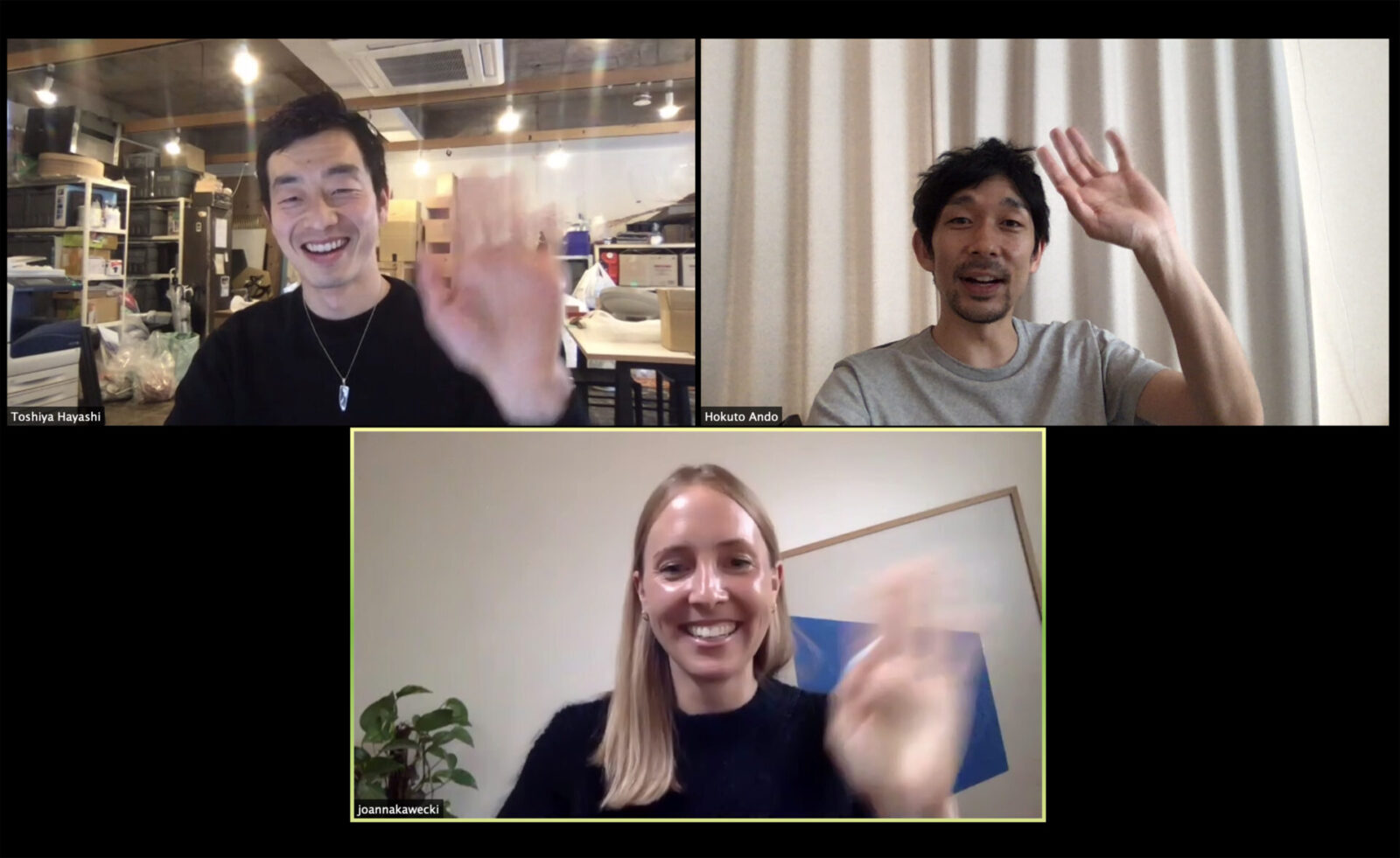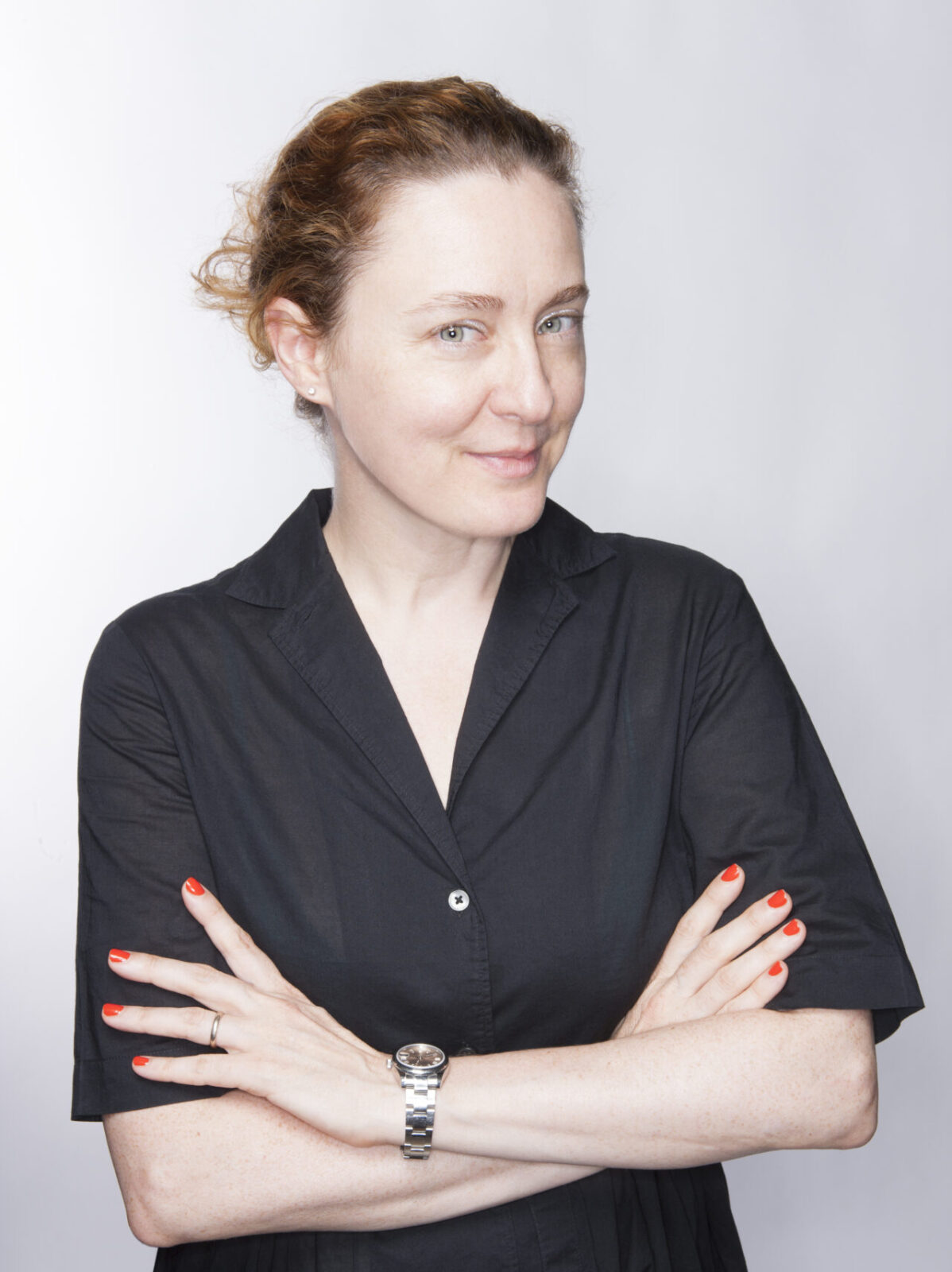Joanna Kawecki
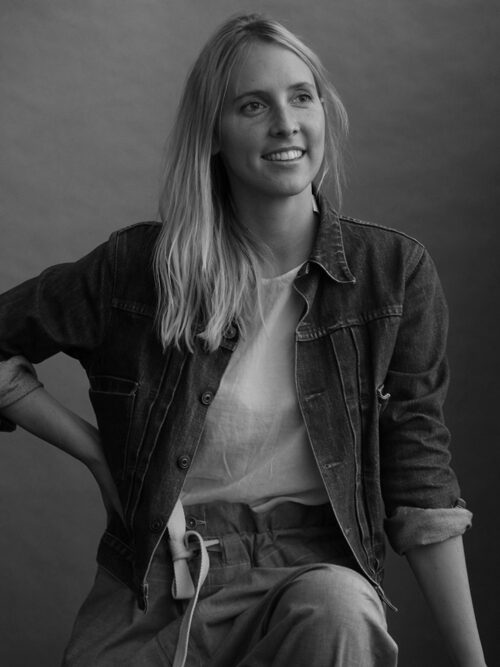
There are surprisingly many people who wonder what kind of design, contemporary design is. At we+, we say that it expands the value of design and creates new perspectives. However, there is actually no clear definition. It can be collectible design like what Design Miami pioneered. It can be experimental design based on research. Such design is generally called “contemporary design.” Right now, due to COVID-19, the world is at a major turning point. Therefore, we want to talk to design industry professionals to discuss where contemporary design should be headed. Our first guest is Joanna Kawecki, a design journalist managing a global design magazine called “ALA CHAMP.”
- Joanna Kawecki
A writer and editor specialising in design and architecture. Australian-born to Polish parents, she currently resides in Tokyo since 2013. Joanna co-founded Ala Champ Magazine in 2009, and also leads Champ Creative, an international consultancy and special projects studio, whilst also regularly contributing to various international print and online media including Surface Magazine, Indesignlive and Habitusliving. Driven by curiosity, she is interested in innovation in design whilst also exploring the origins of craftsmanship and tradition.
Joanna thoughts on Japanese contemporary design
First of all, can you briefly tell us about ALA CHAMP?
I always loved collecting magazines and books and was interested in publishing. I have been based in various cities such as London, Paris and Berlin. Like i-D magazine in London, the magazine in each city focused on the respective city and country. But there was no magazine that connected the world. So I wanted to create a medium for the world going beyond national borders. In 2009, ALA CHAMP was started as a global medium to cover design, fashion, art, and contemporary culture.
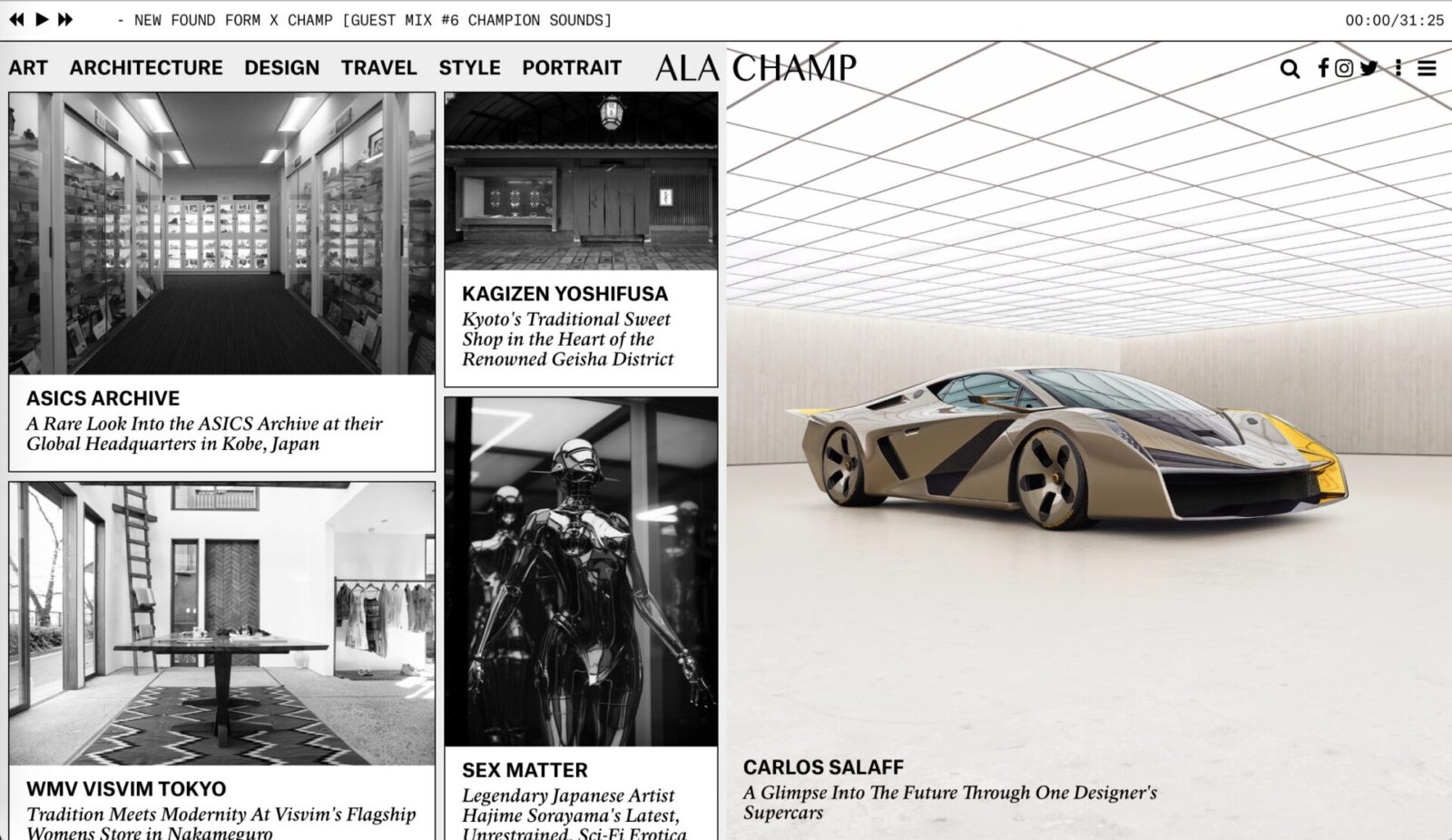
You are currently based in Tokyo. Why Tokyo?
When I was living in Australia, my younger twin sister Monique, with whom I started ALA CHAMP, was living in London. Since Tokyo was halfway between our two cities, we often met up in Tokyo. I eventually made friends in Tokyo, created a community, and wanted to see more of the city. At first, I intended to stay in Tokyo for a short period, but it has already become seven years. I didn’t think I would spend this much time exploring Tokyo’s architecture and design.
Tokyo or Japan must have something that attracts you. ALA CHAMP has been a media partner with Design Miami since 2012. As someone who has long observed mainstream contemporary design, what does contemporary design mean to you?
I think it reflects the times. We could call it, “The design of era” or “The design of period.” It reflects the trends, movements, aesthetics, ideas, and even the innovations and technologies of the times. Contemporary design can be applied to many disciplines across product, furniture, visual/ graphic, spatial design, but it always reflects thinking that offers solutions for “today” and the future. An important role of designers, is to push the limits of creativity and innovation in design.
From that perspective, which designer is now attracting attention?
In Japan, Tokujin Yoshioka is an excellent contemporary designer due to his diverse body of works that explore nature and design and all hold his consistent and recognisable “thread” which allows for collectibility. I also love the conceptual thinking of TAKT PROJECT and I really admire the work of Ryosuke Harashima whose work I first came across at Somewhere Tokyo. He combines modern materials (such as brass fittings) together with antique objects such as urushi lacquered bowls or bamboo baskets to create a completely new context and design. Among overseas designers, Sabine Marcelis first comes to mind. She has a refined, unique design style and works with many collaborators while based in Rotterdam. She works with various craftsmen and pushes them to create new techniques they may not have previously created which is important for the progression of the design industry. More-so, her work can be applied in other contexts such as spaces by OMA. I must also mention that what I absolutely love about we+’s works, is kinetics and phenomena-driven approach always with an innovation in original materials. Your designs are always so multi-layered and visually captivating that both represent current times and reflect a sense of the future.
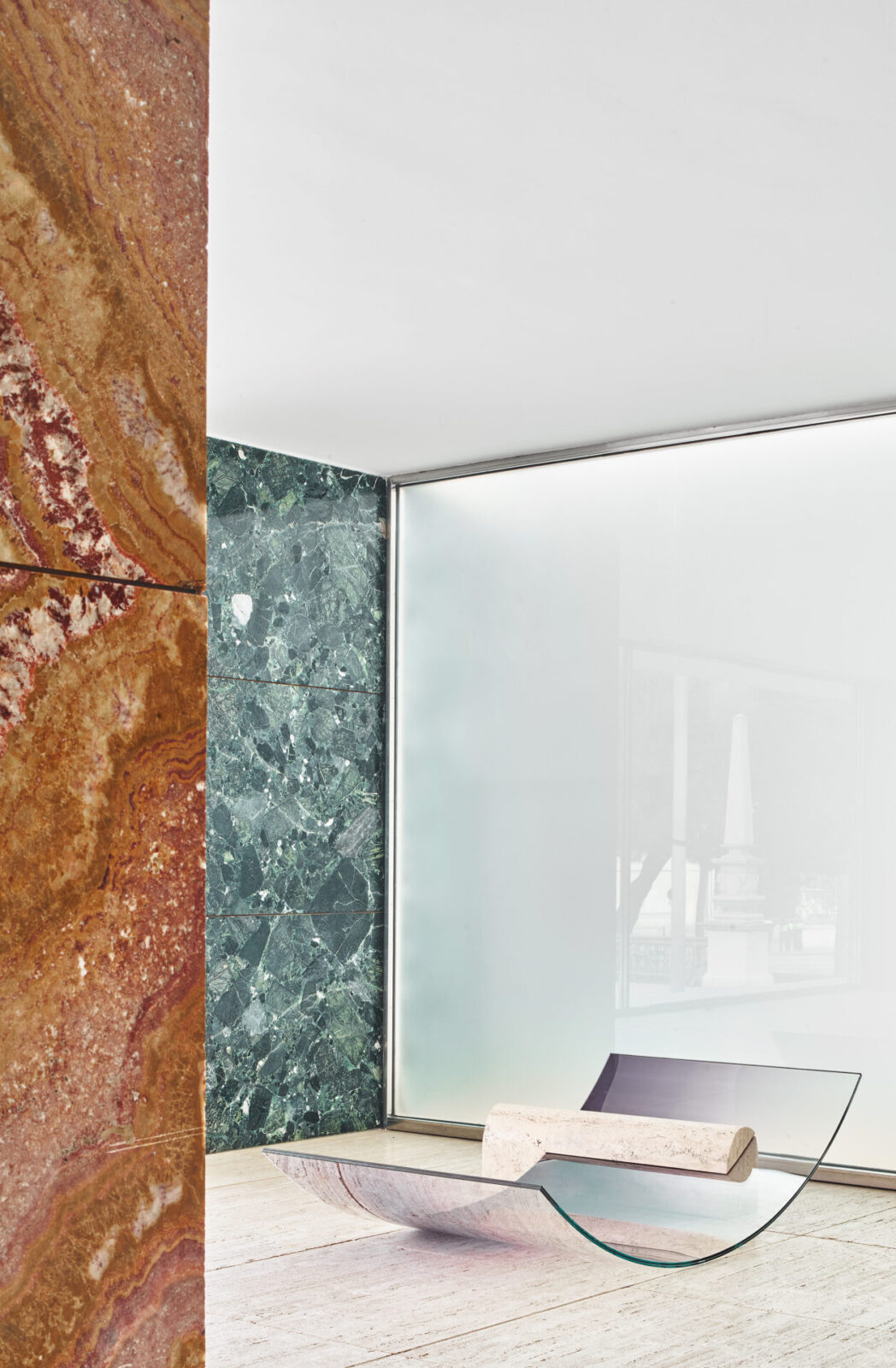
Photo: Jose Hevia
Oh, thank you very much! I think it is important to have an inquiring mind and have it lead to new contexts. Overseas, contemporary design makes a major impression. What do you think about Japan’s scene?
Since Japan doesn’t have a strong number of collectors or buyers, Japan’s contemporary design market is difficult to identify. The Japanese have different purchasing habits compared to Western countries, dependent on a number of factors such as lifestyle and the perception of design. They favour works that have functional use in daily life and seldom buy works for collections. There is the background of “Kogei”. Rather than producing artistic pieces in a super collectible, Japanese designers are happy to just create designs that most people can understand and access. What Japanese designers should do is, create a different layer for the world market.
Japanese homes also have a more limited space, so it may well produce unique viewpoints.
Chairman of Sempre Design, Mr.Tamura and Joe Suzuki established a temporary design gallery named “Gallery Tamura Joe.” Since Japan has so few design galleries, it may be one reason why contemporary design has not taken hold among the populace.
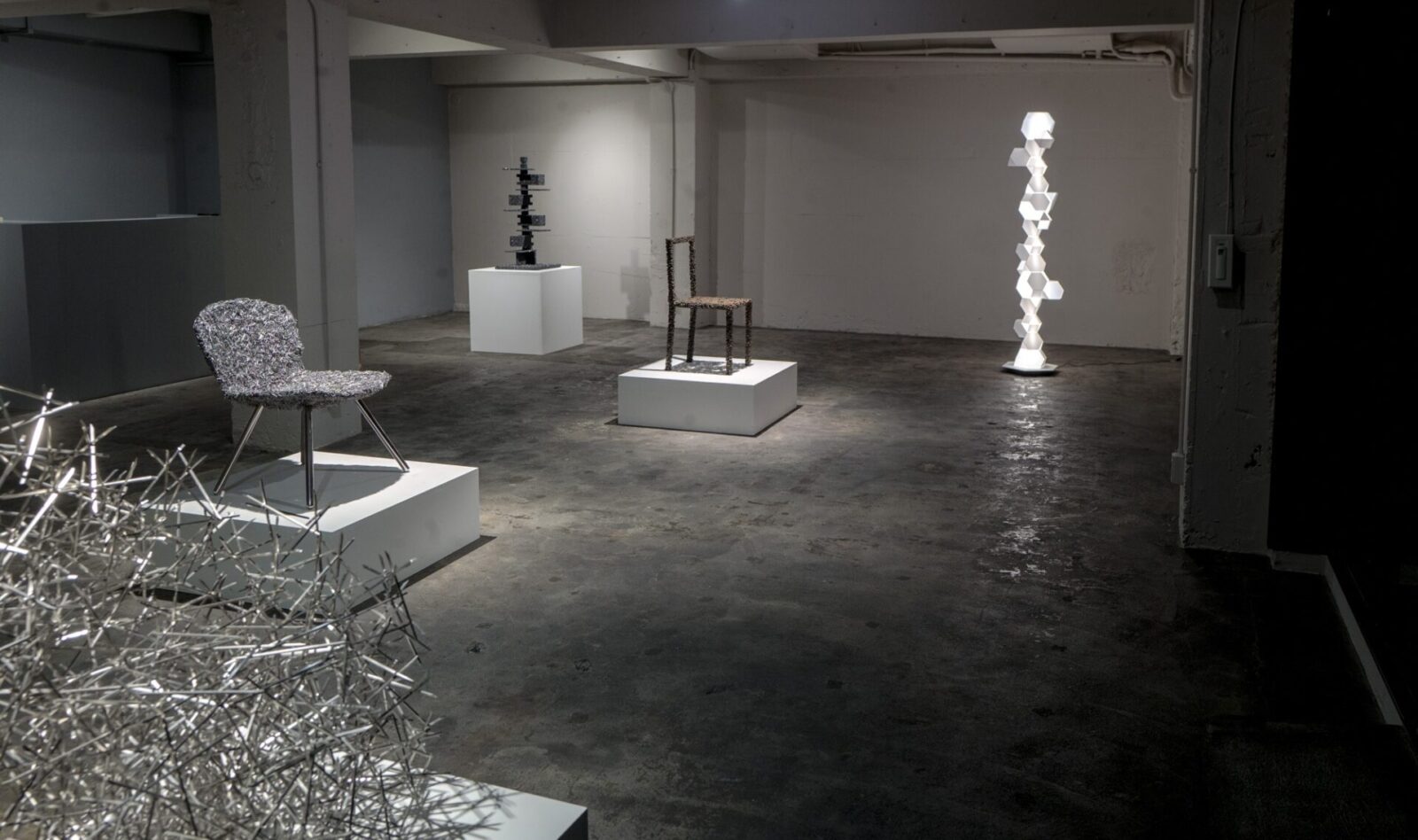
Photo: Joe Suzuki
Yes, you’re right. As with art, contemporary design needs gallerists who can negotiate with collectors. For example, the Carpenters Workshop Gallery in London and Paris connects its designers with collectors and negotiates pricing. It would be nice for Japan to have more design galleries that people can develop new relationships with collectible design with.
Contemporary design market trends at Design Miami
Last December, you went to Design Miami in Miami. What did you like and what good experiences did you have?
What I found interesting was that Japanese potters’ pieces were exhibited at both Art Basel and Design Miami. I thought it was unique to see pottery in both the art and design realms.
That’s interesting. Did Design Miami give you any ideas for new works?
It was my first time to see it. It was very significant to directly experience the contemporary design market. For our exhibit in the future, I thought that we must create things that integrate into daily life and things that can be kept in an office, home, and public space for a long time. As Joanna said earlier, design reflects society, so we have to also clearly include that perspective in our presentation.
I think that Design Miami is a very interesting place to gauge the value of the global collectible design market. However, Design Miami is still much smaller than the Art Basel venue. Whilst Design Miami features collectible design, Art Basel features collectible art and the larger size of their venue reflects collector’s budget and value of investing in works. It is clear that art holds much more collectible value than design pieces. Yet it is often in retrospect that the value of design receives new popularity, such as Shiro Kuramata’s or Jean Prouve’s works, or Dieter Rams at Braun. For example, if Design Miami had a larger number of patrons or commercial sponsors like Art Basel has, that can invest more money in the event, I think the venue would be more invigorated with a greater sense of diversity in design and global community. From that perspective, Milan Design Week’s structure is fascinating for it’s range of events and involvements across the city — it truly feels like a design festival, celebrating all facets of design.
I see. However, many collectors actually bought works there. If we exhibit there and sell our works and make connections with collectors and gallerists, it would be worth the venue fee and other expenses.
That would be good. I would be very curious about the type of collector and the reasons for the purchase. Would it be for a personal collection, or an investment purchase? It would be interesting to analyse.
What people will want from Japanese designers
Have you ever thought of creating designs for daily use?
I think our style is a little different from other designers. Because designing products and furniture was not our specialty, we always strive to find new design angles and perspectives. We think this is our role. We start from thinking about how chairs are made, do continual research, and develop new materials. For the Grand Seiko installation at Milan Design Week last year, we developed a fluid that glows. We might be more of a researcher.
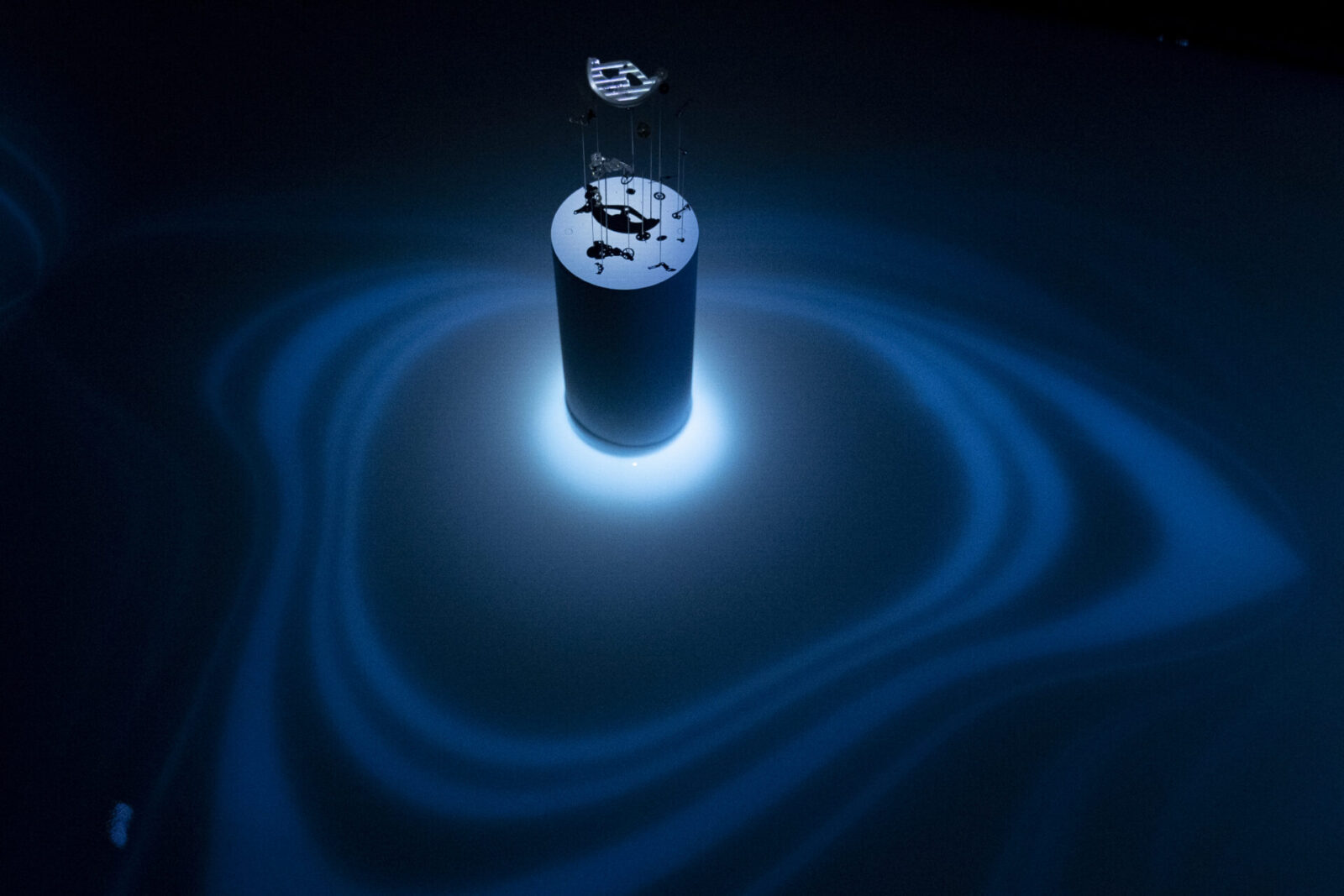
Photo: Daisuke Ohki
For example, Spiber inc. is a company rooted in research and development and aiming for practical uses of protein materials. They receive a lot of support from the national and local governments. I know we+ is a design studio that also focuses on research and development. How do you cover the expenses?
The costs for our day-to-day research and development of our own works are covered by profits earned from work for clients. However, we have recently been getting more invitations to join corporate R&D projects. We think about new concepts for products and services and conduct research and prototype development together. However, in many cases, we use the knowledge and contemporary design perspectives gained from our day-to-day research.
With that in mind, the vocabulary used in the design industry also needs to change. The creative field is multidisciplinary, and designers will need a new language. As with architecture needing to expand beyond its traditional sculptural role, Japanese design also needs to change.
Yes, I think now is the right time for change. I think the role of Japanese designers is expanding every year, and what clients want from designers is changing a lot. Besides designing and making things, designers must have a broad understanding of many things in society such as our daily life, environment, ecosystem, history, and economy and be more relevant.
Yes, I think it’s common sense for the many companies to recognize and value the input from designers. Speaking of which, when we+ unveiled its new studio, didn’t I meet the designer who designed the Tokyo Olympic medal case?
That was Shinya Yoshida.
Oh yes, that was wonderful. A big organization like the Olympic organizing committee needs to understand the great power that each designer can have. Media such as magazines should also clearly publicize the importance of designers. Japan has wonderful design and architecture magazines that cover creative works, but they don’t shed much light on the people creating them. I think they should talk more about the creator and his or her background such as the person’s upbringing, career, and influences. Also, if there were more media introducing Japanese design in both Japanese and English, people around the world would know about Japan’s design scene and it may change Japan’s design industry.
To better convey Japanese design to the world, I think it would be nice if there were more Japanese designers working overseas.
Yes, I agree. In the case of Japan, trends in fashion, art, and design tend to come from overseas. For example, when TAKT PROJECT attracted the interest of overseas markets, it sparked their popularity in Japan too. With globalization, communicating in English is extremely important and you can talk about your work to world markets. This would be a great advantage for a design studio. I think it is an important asset for Japanese designers to grow.
To that end, for example, exhibiting at Milano Salone is one way designers can easily connect to the world. Japan is a small island nation and with a self-sustaining industry, perhaps there is little sense of urgency to venture abroad. In the case of South Korea, Taiwan, and Singapore, their domestic industry is small, so they are forced to go abroad. As a result, they have produced designers who can compete internationally.
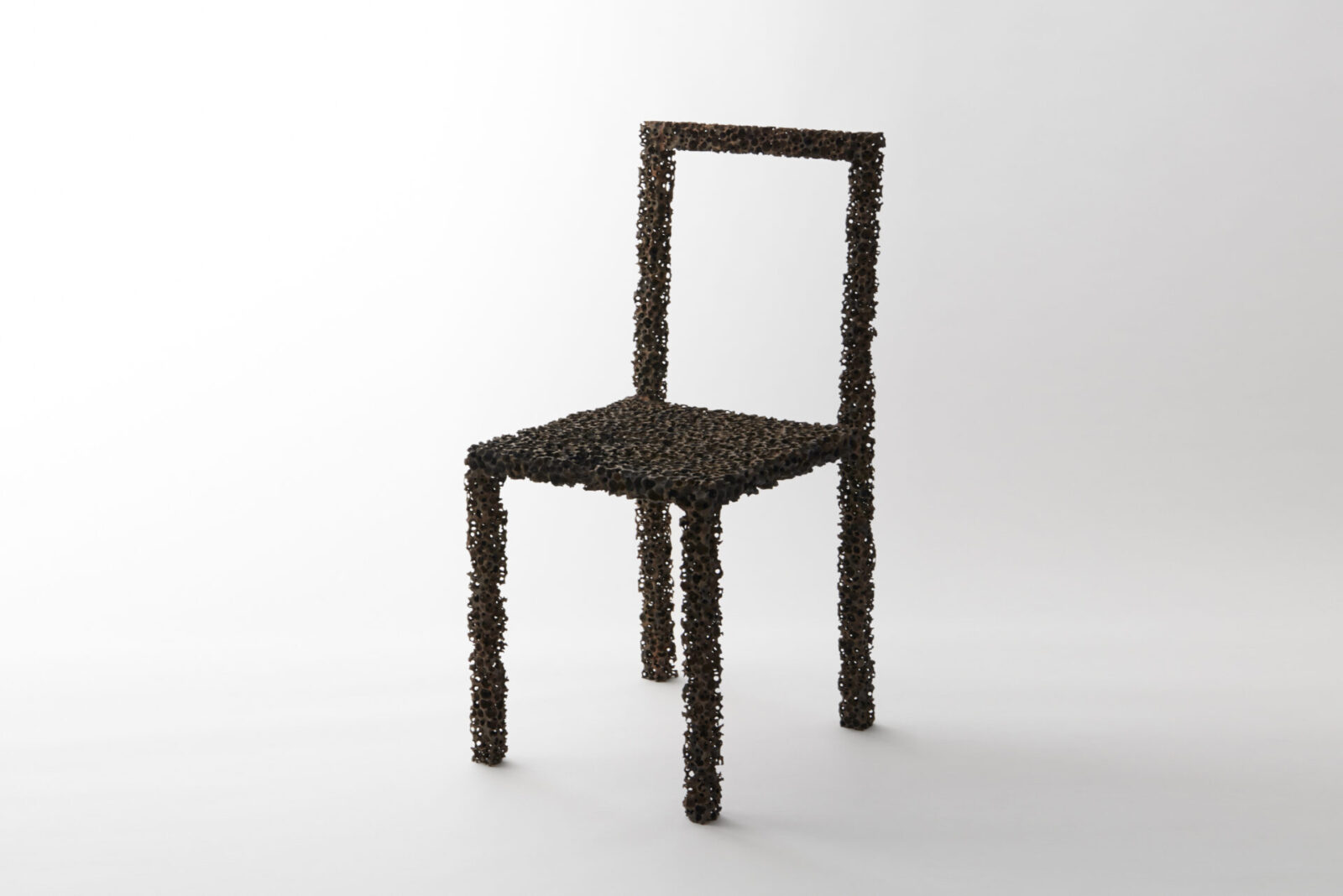
Photo: Masayuki Hayashi
It’s important to be connected to the world, but it’s also equally important to hold a design week in Tokyo. Since Japan has a treasure trove of great designers and craftsmen, I want them to be promoted more widely to the world by producers and curators who can conduct PR projects. The advancement of the design industry relies heavily on the strength of individuals who promote the value of design and fashion. Even when we look at the popularity of global design weeks, it is based on the director’s or management’s global community and their relationship with sponsors such as Swarovski that can support to build a strong industry. It is always the individual who recognizes the value and advances the industry. In Japan, it really is necessary to have someone like Ms. Kida at ELLE DECOR to connect with and support designers. I really love her.
You’re right. However in Japan, compared to designers, there are few design journalists, curators, and producers, especially from our generation.
Yes, we have no prominent journalists like Tim Blanks or Suzy Menkes such as found in the fashion industry. I wonder if it’s because it is unconventional for people in Japan to express strong opinions.
It might also be due to Japan’s critique culture not yet fully developed.
There may be problems with education as well. I think current art and design trends should be added to the education curriculum.
Living in a world with coronavirus
What do you think designers should be doing after the COVID-19 pandemic is over?
I think technology and manufacturing methods will continue to advance, but above all, people’s needs will change. As a result, I think the designer’s output tied to this change will shift. For example, things that have more function will be in demand. All the industries, including fashion and design, had excessive production and excessive consumption. I think COVID-19 spurred us to think about what really is essential. Our lives might become more minimalistic. Many designers will perhaps think about what the true lifestyle is. Also, since the movement of people was restricted, air pollution was reduced and many places have clean air. In India, the Himalayas have become visible. However, I think in several months, we will see the ocean polluted by the many discarded masks and plastic face shields. Just as there is an urgency to develop a vaccine for the coronavirus, the development of alternative materials to plastics should be equally as urgent. Our environment and lives rely on it.
Now for your closing remarks to our readers.
For many years, Japan has received international acclaim for excellent design. I think young designers have great potential. That’s why they should aggressively venture out into the world. I think Japan’s design industry would also develop further as a result.
